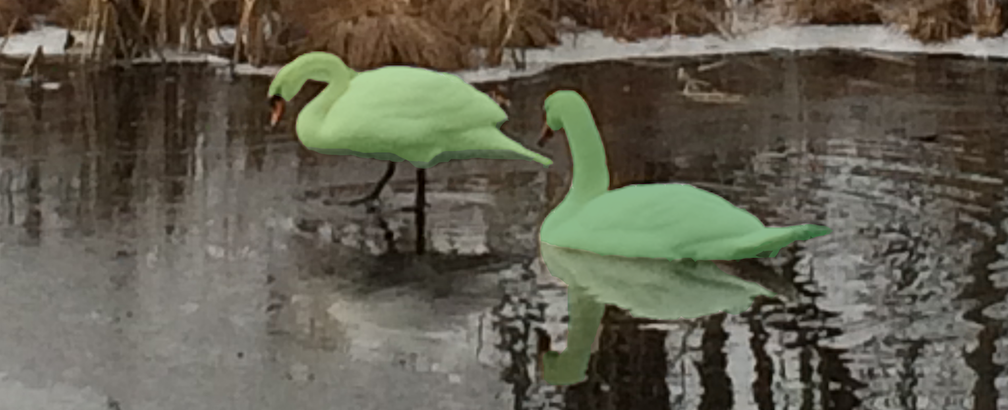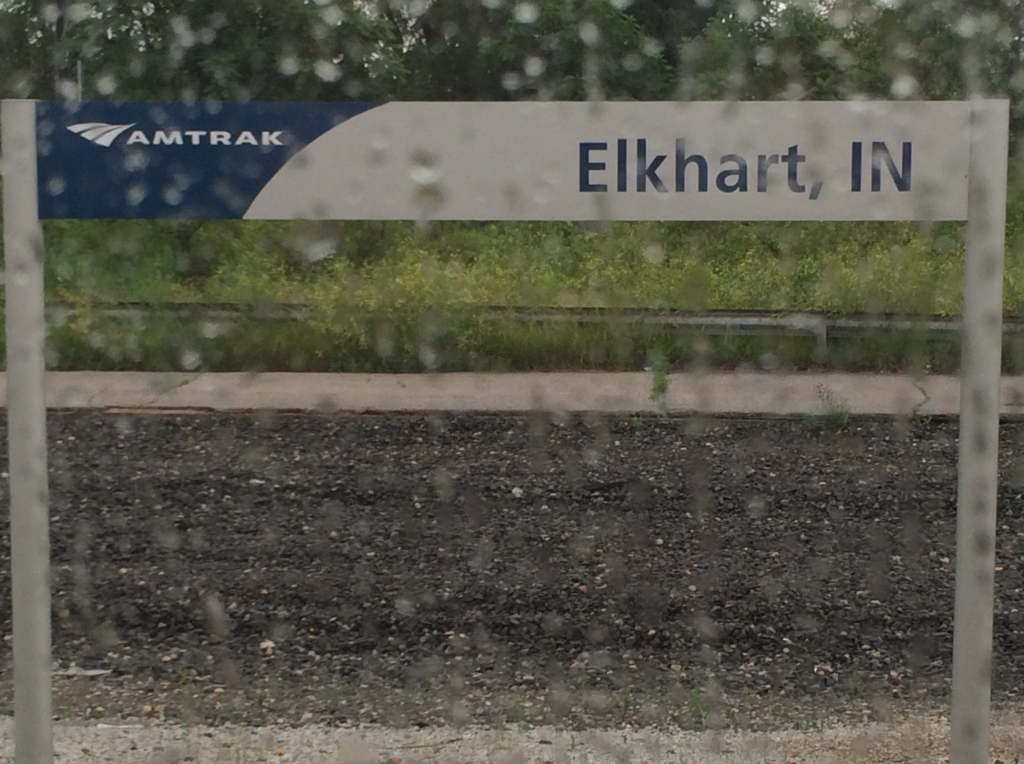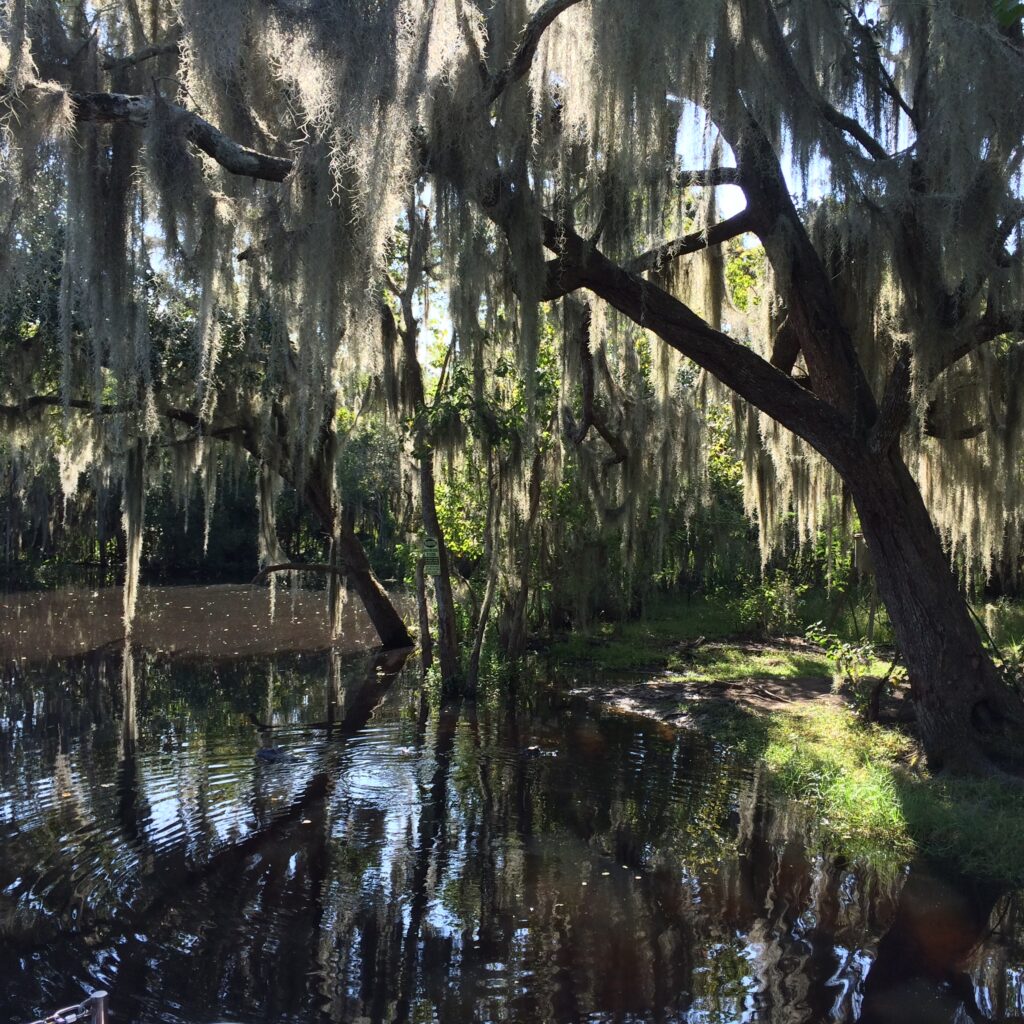“The economy is a wholly owned subsidiary of the environment, not the other way around.” Herman Daly
In his presentation at the Levy Institute’s recent panel on central banks and climate change, William Oman outlined major views on the role of central banks and financial supervisors in an age of ecological threats and climate change, referencing a chapter he and co-authors Mathilde Salin and Romain Svartzman contributed to “The Future of Central Banking.” The intense debates of recent years target two issues in particular: growing ecological threats to price and financial stability, and the evolving redefinition of the role of central banks and financial supervisors (CBFS), especially concerning large asset purchases and liquidity provision, in what scientists know to be a climate emergency.
 Photo credit Robert Kraus, but where was it taken?
Photo credit Robert Kraus, but where was it taken?
Oman identified three main normative approaches. The first, considered the least active response, is risk-based and would limit responses of CBSFs to cases of direct risks to monetary or financial stability. In the second, CBFSs would more proactively address climate change. The third, which Oman calls an evolutionary perspective, focuses on the context in which central banks operate, a constantly evolving role that would undergo change once thought incomprehensible, in our changing world. That would need to work in concert with broad institutional transformation.
Oman also mentioned the less common belief that central bankers should refocus on their “narrow core” mission of price stability and that the “first best” solution to climate change is carbon pricing.
Of course, all approaches are driven by very different visions of the world, of money, finance, the role of the state in the economy, and different theories of value. Historically and ideologically situated, they all raise questions regarding the development of central bank mandates, and the profound ways in which they matter.
The first view assumes central banks and supervisors are “guardians of financial stability,” that money is neutral, markets are stable, and the state has a role in righting capsized markets. Since financial systems are vulnerable to extreme climate events that in turn limit central bankers’ ability to manage inflation, addressing climate change falls within central bank mandates. Under this outlook, CBFSs could contribute to the green transition by measuring climate-related risks, with forward-looking climate stress tests—already underway—and lay out the outlines of how climate change could affect the structure of monetary regimes. Through their actions central bankers contribute to climate risks both directly and indirectly, and so have double materiality. This view is limited both by the fact that climate risks are hard to measure, and even good measurement would not insure responsible capital allocation, all making it unclear that central banks may not be able to carry out their stability/price mandate as climate extremes intensify.
The second and more pro-active view assumes money is not-neutral, and has long-term impacts on the economy, especially in production; financial markets are not efficient and regularly misallocate capital; and the state has both a market creating and shaping role. CBFSs have “significant power” over finance, which in turn has significant power over the economy, while the radical uncertainty engendered by climate change means that worst case scenarios, catastrophic for human civilization, cannot be excluded. Central proposals include requiring regulated institutions to submit transition plans, provide financing at low interest rates for low-carbon activities, and a “green QE” under which banks would purchase publicly issued low-carbon bonds. A major drawback to this outlook is political, central banks would be taking on social issues that should fall to elected governments, filling that void. Another is practical, even pro-active central banks cannot succeed on their own. Goals could clash, and greenflation will almost certainly cause instability—to put it mildly!—in certain sectors. Again it’s not clear inflation mandates can be managed under this approach, and a change of mandate could be necessary. (Oman et al. do not endorse any one approach. Theirs is more of a public-service piece.)
The third view is the most expansive, framing money as a social institution, finance as unstable, and the state as a key coordinator. Here, central banks have to act on ideas coming through the first and second outlooks, but cannot make up for weak efforts of fiscal authorities or poor industrial policy.
Here Green Swans swim into view. In a Forbes interview, John Elkington distinguishes green swans from black by noting that black swans often take you where you don’t want to go, and green swans where you do want to go, but with the intense and unpredictable risks that travel with disruptive technologies. Such risks can lead to irreversible losses in certain sectors that can’t be hedged or insured against by individual agents. Managing green swans calls for broad policy coordination and suggests the role of central banks would have to be profoundly changed, part of a broader systemic reshuffling.
Ambitious goals include radical change in our policy frameworks, coordination with other policymakers, and perhaps fiscal and industrial structures aimed at moderating consumption. CBs could support government-led transitions by keeping interest rates low, with direct financing perhaps an option. Some of the big issues include the fact that CBs have limited ability to address ecological crises, like declines in biodiversity and mass extinctions, and are vulnerable to ecological limits. Oman includes growing evidence that GDP limits could be required, at least in rich countries, which would have profound effects on central banks—need we add? And the need to coordinate between the monetary/financial and real economies may make such a project a nonstarter. This approach would also require democratic consideration to balance inflation goals and ecological objectives.
Now, on to Oman’s open questions. Sobering fact: all of these views are susceptible in “profound ways” to the possibility that we may already be in an under- or even unacknowledged climate emergency. Tim Lenton, of Exeter’s Global Systems Institute, and his colleagues have defined a climate emergency as the product of risk and urgency. Risk is defined by insurers as probability multiplied by damage, urgency as reaction time to a climate red flag divided by the time needed to offset the worst outcomes. We are in an emergency situation if both risk and urgency are high. If reaction time is longer than intervention limits, we have lost control.
Here’s the formula: E = R x U = p x D x r/T
Referencing Lars Peter Hansen’s repeated admonishments that “every model is by nature mis-specified” by the complexities of our world, and that we have to do a better job of including uncertainty in public policy, Oman stresses that those weaknesses would unravel ideas and plans, and the fact that we need to work through mis-specifications itself illustrates the limits of our body of knowledge.
Oman adds in Stanford economist/philosopher Jean-Pierre Dupuy’s idea that our great power to destabilize earth systems, which has made our civilizations possible, brings great responsibility—the ethical obligation to know. But this obligation faces “profound limits:” the structural complexities of ecosystems and their unknowable, catastrophic, tipping points; and the unpredictable limits of the new technologies, specifically our ability, or inability, to substitute increasingly scarce natural inputs with artificial. The concept of financial risk could well become less relevant since, again, there is no way to compensate for damages that are universal.
That brings Oman to his own question, do central banks need a Plan B? William White, former chief economist of the BIS, raised the idea with Oman that efforts of central banks to maintain old mandates and old monetary policy is akin to “fiddling while Rome burns” in the face of truly existential ecological dangers, and that we need to find a workable philosophical framework.
Challenge 1: The frameworks we have assume earth-system stability, which likely do longer applies. How do we determine the correct ethics for crafting a policy framework in an “age of catastrophes?” White has argued that we need to anticipate how someone in the future might judge the choices we make now. No regrets is not enough—the idea that we don’t want to spend too much if worst cases do not occur is imbedded in our thinking.
Challenge 2: What is the correct hierarchy of objectives? In the 1930s microeconomic goals were subordinated to macroeconomic goals in direct response to the Great Depression. Is it time to subordinate macroeconomic to ecological goals? Here Oman quotes economist Herman Daly, “The economy is a wholly owned subsidiary of the environment, not the other way around.”
Challenge 3: What would an inversion for central banks look like? Would they need to pay more attention to the long-term effects of monetary policy, and to coordination with other agencies? Does the climate emergency justify a war-time financing role for central banks? And, finally, are credit controls, which will likely be a last resort in avoiding tipping points, already justified?
And, we’ll add, what would the whole, new, mess look like?
Watching William Oman and other young economists stepping forward to outline challenging new ideas in a world of inaction is indeed heart-breaking. We owe them our attention. They are the ones facing the existential dangers they so bravely describe.








Eagles, Eels, and Forever Chemicals
Wildlife ranges are forever changing. As is becoming more widely understood, species most now migrate to find appropriate new habitats in our changing world, not just to find food and shelter as the seasons change. These days, with the climate changing more quickly than species are able to migrate, they need our support through scientifically planned wildlife corridors, overpasses, and breeding refuges.
Citizen scientists have long assisted in tracking changes in migration patterns and ranges, a crucial role as field science is notoriously under-valued and underfunded. If you ever see a truly distinctive bird, like a swallow-tailed kite, out of its usual range, you need to discipline yourself to trust your eyes, even if your bird book suggests the bird is 1,000 miles too far to the north. In the old days you then had to search around for print reports confirming such sightings, but now we have eBird.org, a wonderful example of how citizen scientists can support conservationists. In recent years black vultures, glossy ibises, and Mississippi kites have all extended their breeding ranges far northward, and eBird has been tracking their progress. A vibrant roseate spoonbill showed up in New York last week—its official range extends from South American into the coastal waters along the Gulf of Mexico.
eBird also tracks dramatic cases that excite some birders eager to see a distant species, and trouble others because a vagrant of a vulnerable species is clearly lost. In August of 2020, a Steller’s Sea Eagle showed up near Alaska’s Denali Park. A bird presumed to be the same eagle was spotted in March of 2021 along Route 59 in Goliad, Texas, perhaps blown off course by a winter storm. In December the eagle again believed to be the same (we have to keep saying that because we don’t actually know) was seen around Taunton, Massachusetts, before passing through Nova Scotia, and landing in Maine in early 2022. Sightings a few weeks ago put it in Spaniard’s Bay in Eastern Newfoundland. The usual range of this vagrant runs from Korea up through the Kamchatka Peninsula, home to a large breeding population. Sometimes the raptors, with a wing span of 8 feet, show up in the Aleutian Islands and even Juneau, but this trip is clearly stunning.
The Texas sighting included a photograph—there is close to zero chance such a sighting would get past the eBird.org proctors without digital evidence—and to confirm the accuracy, a team from the Texas Bird Records Committee went out into the field and found the exact post where the eagle had perched. One birder reported that the unexpected appearance of hundreds of birders at a working wharf in Maine could have caused an ugly scene, but instead the mood was “bemused, pleasant, and happy.” Although these days science often drives a wedge between us, that’s an example of how it can bring us together.
Citizen scientists can also take a lead in the health of their own communities. Mount Desert Island Biological Laboratory introduced such a project in one of their ongoing Science Cafés, informal open-floor events intended to advance ground-breaking biomedical research.
Jane Disney who, among other things, oversees the Community Environmental Health Laboratory at MDI labs, has been working with hundreds of citizen scientists testing for toxins like arsenic, a crew that has now turned their sights to PFAS as well. Perfluoroalkyl and polyfluoroalkyl substances, PFAS, are manufactured chemicals used to make products water- and oil-repellent. But they also contain carbon-fluoride bonds that do not break down naturally, hence the moniker “forever chemicals,” and have been linked to many serious diseases generally associated with aging. In 2021 Maine’s Department of Environmental Protection released a list of priority towns where contamination is linked to the use of sludge, septic-tank sewage, and industrial waste as fertilizer, often on dairy farms. To give you an idea of the complexity of the work, the DEP staff compiled lists of sites they suspected had received 10,000 cubic yards of sludge that was likely contaminated with PFAS, in small rural communities in both Aroostook and Waldo counties, and in cities like Lewiston. These all fall within a half-mile of people’s homes and include a dairy farm where PFAS levels in milk were 150 times the state standard, with some sites perhaps cross-contaminated.
Dr. Disney is working with local homeowners who do find PFAS in their wells to come up with a strategy. Here the divide between wealthy and poor communities is pretty stark. Filtration systems are beyond the reach of some households, and concerns about PFAS are coming up “a lot” in discussions with the residents. A poorly maintained filtration system can be worse than no system, and one participant made the point that since people who rely on municipal water supplies are guaranteed water free of dangerous pollutants, provisions should be made for those without access to such commodities who rely on their own resources. Some scientists are working on ways to break down those carbon-fluoride bonds, but citizens need protections now.
Fred Bever, the Chief Communications Officer at MDI, and he really is an excellent communicator, invited everyone to the upcoming Science Café, the Science of Beer, that will be held at Fogtown Brewing in Ellsworth. If you’re in the region, be there or be square.
Birds, bright and beautiful as they are, tend to get more attention than other species critical to our habitats, like small solitary pollinators, and grubby bugs. A species that really needs our help is the American eel, a critically endangered creature whose life cycle remains an ongoing mystery. Homer’s mentions “eels and fish” in the Iliad, which caused ancient Homeric scholars to question the passage, noting that Homer would surely have known eels are in fact fish. Aristotle was puzzled by their life cycle, and even young Sigmund Freud tried to figure out how they reproduce.
Their spawning grounds in the Sargasso Sea weren’t discovered until 1920, and even now no one has seen an eel breed. Damming of rivers, over-fishing, and pollution have devastated eel populations. In 2003, Bob Schmidt, a founding biologist Hudsonia, an ecological research firm in the Hudson Valley, set up nets at the mouth of the Sawkill on the Hudson River to track their population levels. (If you are in the area, please get in touch with Philippa if you want to join us on the water next spring. Your fingers and toes get cold, but on sunny days the elvers shimmer as they briefly pass through your hands.)
Newly born elvers are transparent, making it hard for fish finning beneath them to see them, and soon after birth drift up from the Sargasso on the currents, a voyage that takes a year. Upon reaching our tributaries, they begin the next stage of their lives, swimming up over waterfalls and human structures, getting further and further inland as, in the words of one researcher, they become larger and more experienced at negotiating the waters. After twenty or so years they swim back to the Sargasso, now they are dark above and white below, camouflaged against both predatory birds and fish, to breed and die.
Science communities are international, and it’s pretty certain that the many individuals contributing to these efforts do not vote along the same party lines. We’ve highlighted research in the past underscoring the importance of volunteer work and social interaction to ameliorate the isolation and depression so often in the headlines these days. Nature provides us with everything we need to stay alive for free. In the three instances outlined above, cooperation not only benefits those working together, it improves the chances that the natural world can continue to labor on our behalf.
Philippa Dunne & Doug Henwood
Photograph: Passamaquoddy Indian Township Reservation